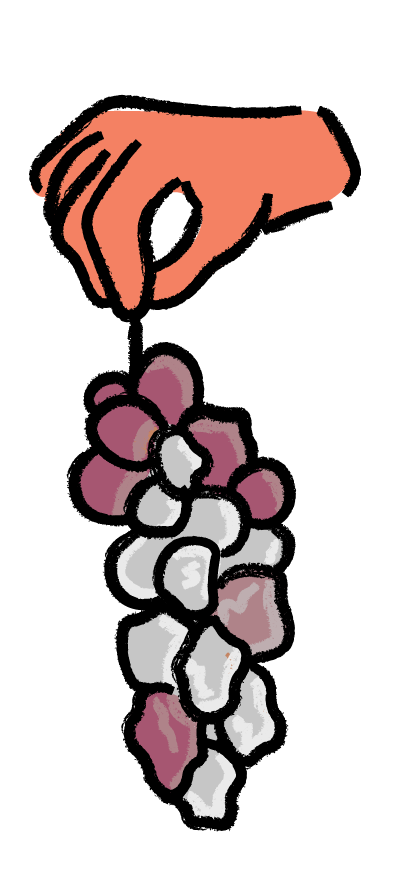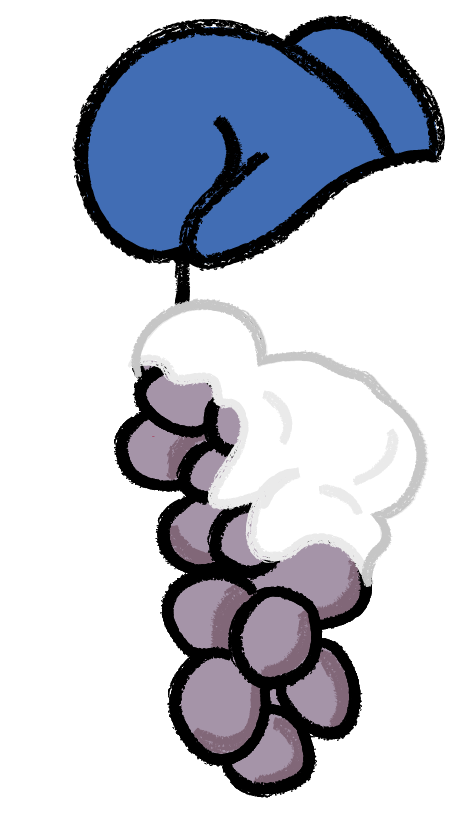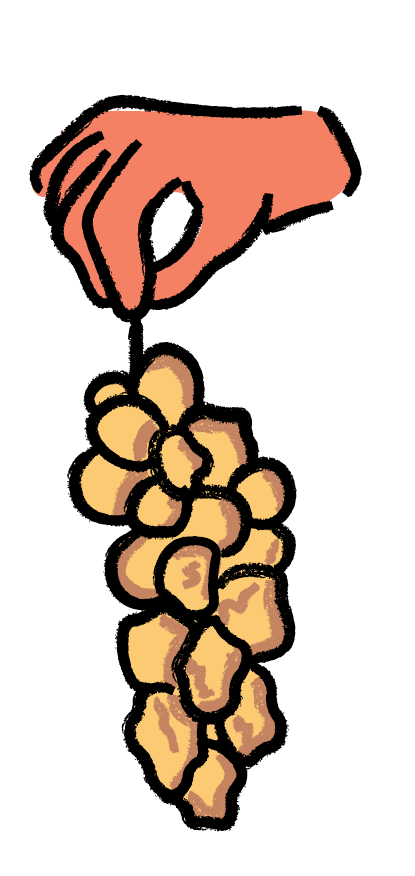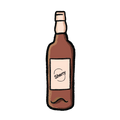

A quick breakdown of all the different types of sweet wine.
A little bit of sugar never hurt anyone, right? Well, there is such a thing as too much of a good thing, which is maybe why a lot of sweeter wines come in half-size bottles! But how are they made? There's a few different approaches to making sweet wine, so we've laid them out below.
Botrytis--red
One of the more common ways you will hear of, and yet it requires a perfect set of circumstances to get right! Botrytis cinerea is the scientific name for 'noble rot', a type of fungus that develops in humid conditions and shrivels the grape, essentially sucking out the water and concentrating the ratio of sugar contained within the grape. The resultant juice is therefore naturally sweet and exceptionally delicious. Some of the more styles of this include Sauternes, from Bordeaux in France, as well as the Auslese or Beerenauslese wines from Germany

Late harvest/ice wine--aromatic
The sun obviously plays a huge part in developing flavours within grapes - the longer you leave the grapes on the vine, the more time the sun has to ripen them and thus increase the natural sugar level. If you really push this to its extremes, you can have very ripe, very sweet grapes - these are known as late harvest wines. In some countries, where the winters are particularly cold, there's a hyper version of this, called ice wine (sometimes written as eiswein).

Essentially the grapes are left on the vine for way longer than is the norm, through summer and autumn and into winter. When the cold weather strikes, the grapes will literally freeze on the vine....but only the water in the grapes has frozen - it needs to be a few degrees colder again for the sugar to freeze! So if the winemaker gets the timing right, they can harvest grapes with very little water and plenty of sweet goodness. Incredible stuff.
Low alc/unfermented sugar--racy
Some wonderful sweet wines (like Moscato for example) are very easy to drink, not only because of their sweetness level, but also because of their low alcohol level. The key here is the wonderful scientific equation of alcoholic fermentation. Essentially a fermentation takes place by yeast consuming the sugar and converting it into alcohol (along with some heat and CO2).
If the fermentation is stopped somehow - generally by cold temperatures or preservatives, both of which kill the yeast - then the wine will have some residual, unconverted sugar, and also a lower alcohol level. This is how some of the semi-sweet German wines are made, for example Kabinett or Spatlese. This is also the method (in part) for the production of Moscato, although that one is a bit trickier, because it's also sparkling!
Fortified--aromatic
Some of the great, most famous sweet wines we know are made using this next method - the addition of alcohol to a wine. Think Port, Madeira, sweet Sherry etc.
Here, a wine is made in the normal style, but then either prior to the fermentation, or perhaps during it, the wine has some neutral grape spirit added to it. Fermentation stops, and the current sugar level is maintained.
The French call this process mutage - you are 'muting' the ability of the yeast to ferment the sugars, and the wine is left sweet (and richer!)
There's a distinction between when you add the spirit, as the resulting wines are quite different. For those where the spirit is added before ferment even starts, the wines are almost liqueur like and have a lot of 'fruity' sweetness.
The more common method is to add the spirit during fermentation.

Dried/raisinating--cellar

This method is traditionally most common in Italy, and involves harvesting the grapes then laying them on mats, often made from straw, either in direct sunlight or in a warm part of a building or shed. They are left for many weeks, over which time they dry up and shrivel, coming to resemble raisins. The effect is the same as the previously mentioned Botrytis - the sugar ratio is increased, and the wines from these grapes are much sweeter. Some examples of wines made like this are Vin Santo and Passito
FAQ
What is a good sweet wine for beginners?
Moscato is probably the best known sweet wine, but is uncommon amongst sweet wines, as it is sparkling. A good place to start with traditional sweet wines is a simple dessert wine - a late harvest riesling or semillon.
What kind of red wine is sweet?
Not many red wines are sweet! There are a few made in Eastern Europe, and very occasionally some are made in Australia. No particular grape variety is automatically sweet (or dry) - it is the decision of the winemaker.
What type of wine is sweet?
Dessert wine is the best known sweet wine - words like 'late harvest' or 'botrytis affected' indicate a sweet wine. Also look for place names like Sauternes and stylistic words like Auslese; both of which indicate sweet wines.
What is dessert wine?
Simply, a wine you can drink with dessert! Any sweet wine can be drunk with desserts.
Is rosé wine sweet?
It can be, but more often than not, it is dry! No one style of wine is always sweet or dry. At GPD, we think that dry rosés are more refreshing and delicious!
About the Author
Banjo Harris Plane is the three-time winner Sommelier of the Year Australia and a certified advanced Sommelier through the Court of Master Sommeliers. He first cut his teeth in the wine industry working as a sommelier in Australia's best restaurants, before starting multiple businesses in the space of a few years... these included two restaurants, a wine import business and co-founding Good Pair Days!
Do you know your wine personality? If your answer is no, take our quiz to find out which wines to pick up next and build your box!
Build my box





